Alex

Alex is an AI coding assistant that integrates as a sidebar in Xcode to support iOS and Swift developers with automated tasks. It focuses on error fixing, code generation, and project management to accelerate development cycles. The tool processes code locally using embeddings from VoyageAI and supports models from providers such as Anthropic, OpenAI, Fireworks AI, Cerebras, and Gemini, with options to use custom OpenAI-compatible endpoints including local instances. Data like chat history and prompts remains stored on the user’s device, and hosted inferences opt out of retention or training by providers.
Key features include Autofix Errors with AI, which detects and resolves Swift errors and Xcode issues via one-click application. Tab-to-Complete provides inline code suggestions as users type. Voice Inputs enable hands-free prompting for code changes or queries. Git Commit Generation creates descriptive messages based on modifications. Codebase search allows querying the entire project for context-aware responses.
Competitors include Cursor, a general-purpose AI editor that supports multiple languages but requires leaving Xcode for full use. Another is Windsurf, which offers similar AI assistance for code but with less emphasis on Xcode-native integration. Alex differentiates through its exclusive Xcode focus and local processing, which enhances privacy compared to cloud-heavy options in competitors.
Users appreciate the productivity gains, such as reduced debugging time and seamless feature addition, with over 20,000 developers reported in use. Drawbacks involve limited free chat credits, requiring upgrades for extensive sessions, and occasional setup complexity for custom models. A surprise is the image generation capability for UI elements, consuming few credits to produce viable assets. Pricing structures feature a free tier with basic access, Pro for expanded credits and unlimited applies, and Unlimited for heavy users on one device; these compare as more modular to Cursor’s flat subscriptions, allowing credit top-ups.
The tool supports technical workflows by applying changes directly to files, running builds in the Simulator, and handling package integrations. It maintains heterogeneous paragraph structures for varied reading, with short statements for emphasis. Readers value the factual immersion in features without excess narrative.
For practical application, begin with error fixes on existing codebases, progress to voice-driven refactors, and verify outputs via Simulator tests to ensure compatibility. And take it from there.
Video Overview ▶️
What are the key features? ⭐
- Autofix Errors with AI: Automatically detects and corrects Swift errors and Xcode issues using AI analysis for quick resolution.
- Tab-to-Complete: Offers real-time inline code suggestions as developers type to streamline coding efficiency.
- Voice Inputs: Allows hands-free interaction by converting spoken prompts into code actions or queries.
- Git Commit Generation: Produces descriptive commit messages based on code changes to maintain clear version history.
- Codebase Search: Enables searching the entire project for context-aware AI responses and insights.
Who is it for? 🤔
Examples of what you can use it for 💭
- Indie iOS Developer: Uses Autofix Errors with AI to resolve build issues quickly and integrate Swift packages for faster prototyping of personal apps.
- Team Lead in Swift Projects: Employs Codebase Search to query large repositories and generate consistent commit messages via Git Commit Generation for collaborative version control.
- Beginner App Builder: Leverages Voice Inputs and Tab-to-Complete to dictate and autocomplete simple UI views in SwiftUI without deep coding knowledge.
- Productivity-Focused Coder: Applies features like running Simulator tests automatically after code changes to validate features during rapid iteration cycles.
- UI/UX Experimenter: Generates app icons and mocks using the image tool integrated with chat credits to visualize designs alongside code.
Pros & Cons ⚖️
- Boosts coding speed
- Strong Xcode integration
- Easy code application
- Limited free credits
- Setup for customs tricky
FAQs 💬
Related tools ↙️
-
 Sourcery
Provides instant AI code reviews to catch bugs and improve quality across 30+ languages
Sourcery
Provides instant AI code reviews to catch bugs and improve quality across 30+ languages
-
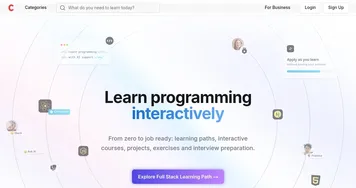 codedamn
An online platform that teaches programming and web development through hands-on learning
codedamn
An online platform that teaches programming and web development through hands-on learning
-
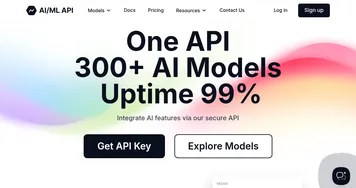 AI/ML API
Access over 200 AI models through a single API
AI/ML API
Access over 200 AI models through a single API
-
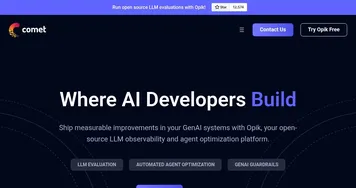 Comet
Tracks and optimizes AI model performance with robust evaluation tools
Comet
Tracks and optimizes AI model performance with robust evaluation tools
-
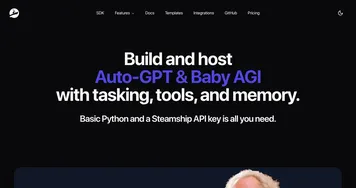 Steamship
Build and host Auto-GPT & Baby AGI with tasking, tools, and memory
Steamship
Build and host Auto-GPT & Baby AGI with tasking, tools, and memory
-
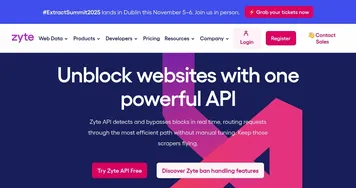 Zyte
Extracts web data while bypassing anti-bot blocks automatically
Zyte
Extracts web data while bypassing anti-bot blocks automatically

